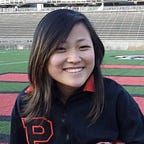What is Special Education Supposed to Look Like?
In Part 1 of my mini-series on special education, I present an analogy for understanding a high-level overview of what special education is designed to do and a challenge to the traditional way we separate kids.
This is how special education and intervention is typically visualized.
…
Yeah. I’m confused too.
Having taught special education and researched its policies for three years, the nuts and bolts of special education still baffle me. At its core, special education is designed so that all students get the type of education that they need and deserve.
What that means in practice, including the rights that students and parents have, the school’s role in providing a program that works for every student, and the district’s financial responsibility to schools, is extremely complex and, in too many cases, results in grave injustices for students.
The motivation behind this mini-series on special education is to shed light upon the bright spots in practice and also where things are going very, very wrong.
So forget about that pyramid. Here’s my beautiful diagram of nets that simplifies the theory behind special education.
Let’s say there are 25 students in a given classroom. The vast majority of students, 80% of the class, or 20 students, get what they need academically in the whole group classroom. Generally, these students are meeting the academic requirements that the teacher, school, and district have set.
However, 20% of the class, or 5 students, are not meeting requirements. These students “fall through the gaps” of the whole group classroom. They need a little more. A good classroom teacher weaves a finer net to “catch” these kids.
Maybe the student’s behavior requires more motivation, so the teacher creates an incentivized behavior plan. Maybe the student needs small group instruction or extra tutoring. Most students in this group are able to meet academic expectations with the extra time, attention, and planning that the teacher and school provide.
Unfortunately, for 5% of the class, or 1.25 students (we’re going to round down to 1 here), this extra just isn’t enough and this student continues to “slip through.” The teacher starts to notice that he or she isn’t responding to the strategies that have worked for the other students. The teacher may also notice gaps in focus, fine motor skills, speech, reading, or behavior that raise a red flag.
This student is referred to special education. If a group of experts determines that this student does in fact have a disability, they, in conjunction with the student’s parent(s), develop an Individualized Education Plan (IEP) for the student.
Now the student has the most kickass net ever — a special education teacher who uses a wide variety of educational strategies and works in partnership with service providers to meet the student’s specific needs.
In a high-functioning school, where all things are going really well, this is how special education typically looks.
But what if we reversed this system?
Universal Design is the idea that things can be made accessible for all people. The structural design on the left, for instance, can be used by both people walking and people using wheelchairs. The picture of the doorknob at the top of the blog post is another classic example of Universal Design. In the 90s, David Rose, a professor at the Harvard Graduate School of Education, introduced the concept of Universal Design for Learning (UDL) — providing multiple means of learning, expression, and engagement that cater to all unique student needs. Other great academic minds, such as Thomas Hehir (also of HGSE-fame), have further pushed on what this can look like in actual classrooms.
In the language of nets (don’t you love this analogy?), UDL allows us to wonder — what if whole group education starts with the most finely woven net?
Instead of removing students from the whole group setting, which research has shown negatively impacts children, why not replace our cookie-cutter approach to educating children with diverse teaching strategies that make the classroom accessible for all?
Here’s what that fine net would look like. (Pun intended.)
Doesn’t it make sense to dedicate resources to make whole group instruction better so that NO kids fall through the cracks?
In this theoretical classroom, students would learn visually, kinesthetically, and orally. They would have multiple ways to show their learning: writing, speaking, drawing, or moving. And there would be multiple teachers providing different levels of instruction, engagement, and access. Basically, the whole group classroom would utilize all the best practices of a special education classroom. Most importantly, all students would feel a sense of belonging, community, and inclusion.
Do these schools exist? Yes, but it’s pretty hard to pull off. It is also important to note that there is no one correct way to service students or a best way to implement Universal Design for Learning.
Sorry to end on a (thrilling) cliffhanger! My next blog post will feature a case study of two schools and the challenges they encounter when putting these principles to practice. Stay tuned for more.
